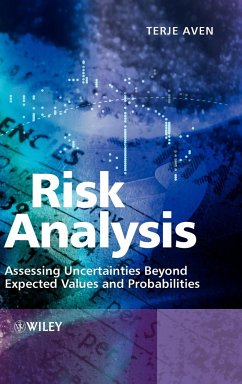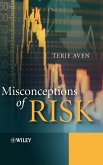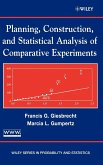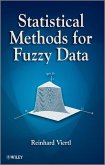Everyday we face decisions that carry an element of risk and uncertainty. The ability to analyze, predict, and prepare for the level of risk entailed by these decisions is, therefore, one of the most constant and vital skills needed for analysts, scientists and managers.
Risk analysis can be defined as a systematic use of information to identify hazards, threats and opportunities, as well as their causes and consequences, and then express risk. In order to successfully develop such a systematic use of information, those analyzing the risk need to understand the fundamental concepts of risk analysis and be proficient in a variety of methods and techniques. Risk Analysis adopts a practical, predictive approach and guides the reader through a number of applications.
_ Provides an accessible and concise guide to performing risk analysis in a wide variety of fields, with minimal prior knowledge required.
_ Adopts a broad perspective on risk, with focus on predictions and highlighting uncertainties beyond expected values and probabilities, allowing a more flexible approach than traditional statistical analysis.
_ Acknowledges that expected values and probabilities could produce poor predictions - surprises may occur.
_ Emphasizes the planning and use of risk analyses, rather than just the risk analysis methods and techniques, including the statistical analysis tools.
_ Features many real-life case studies from a variety of applications and practical industry problems, including areas such as security, business and economy, transport, oil & gas and ICT (Information and Communication Technology).
_ Forms an ideal companion volume to Aven's previous Wiley text Foundations of Risk Analysis.
Professor Aven's previous book Foundations of Risk Analysis presented and discussed several risk analysis approaches and recommended a predictive approach. This new text expands upon this predictive approach, exploring further the risk analysis principles, concepts, methods and models in an applied format. This book provides a useful and practical guide to decision-making, aimed at professionals within the risk analysis and risk management field.
Risk analysis can be defined as a systematic use of information to identify hazards, threats and opportunities, as well as their causes and consequences, and then express risk. In order to successfully develop such a systematic use of information, those analyzing the risk need to understand the fundamental concepts of risk analysis and be proficient in a variety of methods and techniques. Risk Analysis adopts a practical, predictive approach and guides the reader through a number of applications.
_ Provides an accessible and concise guide to performing risk analysis in a wide variety of fields, with minimal prior knowledge required.
_ Adopts a broad perspective on risk, with focus on predictions and highlighting uncertainties beyond expected values and probabilities, allowing a more flexible approach than traditional statistical analysis.
_ Acknowledges that expected values and probabilities could produce poor predictions - surprises may occur.
_ Emphasizes the planning and use of risk analyses, rather than just the risk analysis methods and techniques, including the statistical analysis tools.
_ Features many real-life case studies from a variety of applications and practical industry problems, including areas such as security, business and economy, transport, oil & gas and ICT (Information and Communication Technology).
_ Forms an ideal companion volume to Aven's previous Wiley text Foundations of Risk Analysis.
Professor Aven's previous book Foundations of Risk Analysis presented and discussed several risk analysis approaches and recommended a predictive approach. This new text expands upon this predictive approach, exploring further the risk analysis principles, concepts, methods and models in an applied format. This book provides a useful and practical guide to decision-making, aimed at professionals within the risk analysis and risk management field.
"This book provides accessible and concise guidance to the process of planning, execution and use of risk analysis in the context of risk management, with minimal prior knowledge required."( Journal of Applied Statistics , August 2009)
"The author has been successful in presenting the subject of risk analysis effectively. The reviewer would like to recommend this book to all those who would like to know about risk analysis and how it can be performed in practical situations." ( International Journal of Performability Engineering, Jan 2009)
"The author has been successful in presenting the subject of risk analysis effectively. The reviewer would like to recommend this book to all those who would like to know about risk analysis and how it can be performed in practical situations." ( International Journal of Performability Engineering, Jan 2009)








